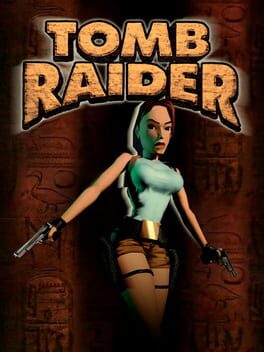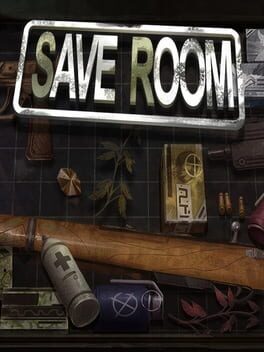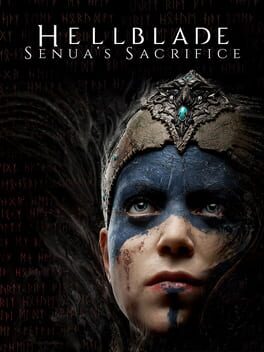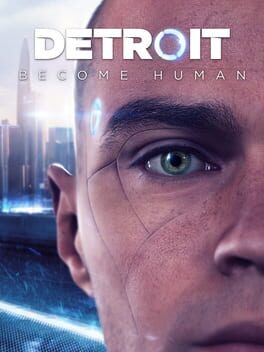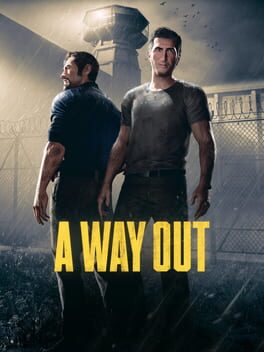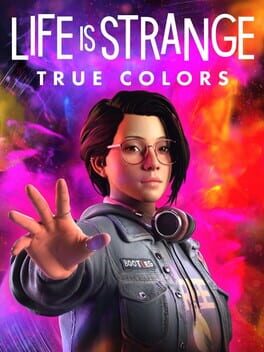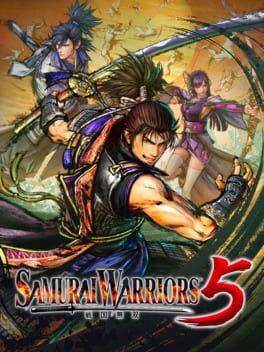Kamster
Bio
Gotta raid dem tombs!
Gotta raid dem tombs!
Badges

2 Years of Service
Being part of the Backloggd community for 2 years

Liked
Gained 10+ total review likes

N00b
Played 100+ games
Favorite Games
160
Total Games Played
000
Played in 2024
119
Games Backloggd
Recently Played See More
Recently Reviewed See More
This is a bitter review to make. I really wanted to love this game, but there are just so many glaring problems with it that the process of playing it was tedious and disappointing at every turn.
First and foremost, there is a serious problem with the SCOPE of the game. Other Life is Strange games are also limited, but this is taken to an extreme. Environments are limited to one main street, and a few shops on it: a bar, an apartment above it, a record shop, a weed dispensary, and a flower shop. That's it. There is one other environment seen at the end of Act 1 (an entrance to a mine), and a couple small rooms in flashback-type scenarios. In order to move the story along, then, the game relies almost exclusively on updating the social media posts on your phone, and between chapters, the flyers you can read in each shop change. You can imagine the tedium of exploration being reading the flyers in the same rooms over and over again. NPCs and interactions with them are nearly absent. There's a cast of about ten secondary characters, but most of the interactions are limited to visiting them in their shops or talking to them in the bar. As soon as you exit the room you were in together, you get a chain of SMS dropped into your phone where a couple followup pleasantries are exchanged such as "Thanks for talking with me today!" or other such nonsense. Many of these characters only show up in the first two acts and are then forgotten, even though they should have a role to play.
The story that is told through the narrative itself is barebones. The first chapter is great, and shows promise in the way all other Life is Strange games do, setting up the characters, the town, the conflict--it's really fantastic, especially if you know nothing going in. Afterwards, however, the game plops you into Chapter 2... which is just conversations in the same environments as before. If you look at the SMS messages, you'll realize a month has passed, but there is otherwise very little in the narrative to indicate the passage of time. Characters now talk as if they have been lifelong friends and nothing is really earned. It ends after a bit over an hour, without progressing anything. Chapter 3 then sidetracks you into an event that the game thinks it's being clever with (a LARP taking place in the town), but which is detached from the narrative and just filling in space. The chapter ends abruptly. Then Chapter 4 throws you into a festival. You talk to a few NPC about how nice the night is, spend ten minutes on a few scripted scenes to progress the story, and it's over.
And now you're in Chapter 5, where the game brings the big finale. The chapter is standout Life is Strange, and it makes you forget that the game had gone literally nowhere previously. But if you stop to think for a moment, you realize you were hoodwinked into a climax that was not earned by the narrative or by the characters. This is a story that started with a beginning and an ending that the writer had in mind, and it didn't matter to them how you arrived from one point to the other. Or maybe it did matter, and they had no idea what to do. Or maybe they knew what to do, but because of the constraints of having to deliver a game while adjusting to remote work due to Covid, they chose to keep the scope limited so they could deliver in a timely way by reusing assets, instead of taking chances with technical and narrative challenges... whatever the reason, the result is a game and a narrative that is superficial and a shadow of what other Life is Strange games have been.
I also have to say that I took a bit of offense to the character's special powers. The Life is Strange series is a series that is focused on women, minorities, loving who you want regardless of gender... It is inclusive and carries messages of support, acceptance, and hope. This is a series where characters will be aware of the feelings of others, and apologize for hurting them or overstepping boundaries. Your main ability on this new installment is supposed to be "the power of empathy," but at some point in time this turns into reading minds like Charles Xavier. It is intrusive and an invasion of privacy. In many instances the NPCs will be pensive or distant, and you will pry into their minds to take and use information for your own gain. This will further upset the NPCs, who ask you to stop, and yet you will keep pushing selfishly on the matter, and extract more information to try to see how you can get more info and make them feel better. The main character believes she is everyone's self-appointed savior. It's disgusting and at odds with the core message that the game is trying to give. The game ignores this, instead of using it as an opportunity to use this duplicity to add nuance to the narrative, or maybe show some character growth.
From a technical/presentation perspective, the game is a disaster. The engine struggles to load and maintain what it's showing you. Half the time when the camera changes, textures will load in a split second after when the camera cuts back to the same asset. This is constant and happens with everything in the game, all game long--facial hair, t-shirts, building decorations. The ending scene, the only montage in the game, struggles with textures loading and characters animating in slow-motion until the loading is complete. Hopefully these can be fixed. More glaring is the fact that any time a new environment has to load after a segment, the game cuts away abruptly to a black loading screen, cutting off the audio and showing a loading logo. Instead of doing a graceful fadeout, with a black screen and music softly playing, you get these abrupt loading screen transitions that make the game feel unfinished. For a game that is almost exclusively narrative-based, for this to be designed this way is absolutely inexcusable.
Summary: Chapters 1 and 5 were fantastic. 2-4 were miserable. The game had obvious development and technical challenges, which translated to an experience that pales in comparison to the other entries in the series. 60 dollars is too much money to ask for, for a game that plays itself and is over in under 8 hours. Buy on sale, and only if you have played the previous entries. Otherwise, play those.
First and foremost, there is a serious problem with the SCOPE of the game. Other Life is Strange games are also limited, but this is taken to an extreme. Environments are limited to one main street, and a few shops on it: a bar, an apartment above it, a record shop, a weed dispensary, and a flower shop. That's it. There is one other environment seen at the end of Act 1 (an entrance to a mine), and a couple small rooms in flashback-type scenarios. In order to move the story along, then, the game relies almost exclusively on updating the social media posts on your phone, and between chapters, the flyers you can read in each shop change. You can imagine the tedium of exploration being reading the flyers in the same rooms over and over again. NPCs and interactions with them are nearly absent. There's a cast of about ten secondary characters, but most of the interactions are limited to visiting them in their shops or talking to them in the bar. As soon as you exit the room you were in together, you get a chain of SMS dropped into your phone where a couple followup pleasantries are exchanged such as "Thanks for talking with me today!" or other such nonsense. Many of these characters only show up in the first two acts and are then forgotten, even though they should have a role to play.
The story that is told through the narrative itself is barebones. The first chapter is great, and shows promise in the way all other Life is Strange games do, setting up the characters, the town, the conflict--it's really fantastic, especially if you know nothing going in. Afterwards, however, the game plops you into Chapter 2... which is just conversations in the same environments as before. If you look at the SMS messages, you'll realize a month has passed, but there is otherwise very little in the narrative to indicate the passage of time. Characters now talk as if they have been lifelong friends and nothing is really earned. It ends after a bit over an hour, without progressing anything. Chapter 3 then sidetracks you into an event that the game thinks it's being clever with (a LARP taking place in the town), but which is detached from the narrative and just filling in space. The chapter ends abruptly. Then Chapter 4 throws you into a festival. You talk to a few NPC about how nice the night is, spend ten minutes on a few scripted scenes to progress the story, and it's over.
And now you're in Chapter 5, where the game brings the big finale. The chapter is standout Life is Strange, and it makes you forget that the game had gone literally nowhere previously. But if you stop to think for a moment, you realize you were hoodwinked into a climax that was not earned by the narrative or by the characters. This is a story that started with a beginning and an ending that the writer had in mind, and it didn't matter to them how you arrived from one point to the other. Or maybe it did matter, and they had no idea what to do. Or maybe they knew what to do, but because of the constraints of having to deliver a game while adjusting to remote work due to Covid, they chose to keep the scope limited so they could deliver in a timely way by reusing assets, instead of taking chances with technical and narrative challenges... whatever the reason, the result is a game and a narrative that is superficial and a shadow of what other Life is Strange games have been.
I also have to say that I took a bit of offense to the character's special powers. The Life is Strange series is a series that is focused on women, minorities, loving who you want regardless of gender... It is inclusive and carries messages of support, acceptance, and hope. This is a series where characters will be aware of the feelings of others, and apologize for hurting them or overstepping boundaries. Your main ability on this new installment is supposed to be "the power of empathy," but at some point in time this turns into reading minds like Charles Xavier. It is intrusive and an invasion of privacy. In many instances the NPCs will be pensive or distant, and you will pry into their minds to take and use information for your own gain. This will further upset the NPCs, who ask you to stop, and yet you will keep pushing selfishly on the matter, and extract more information to try to see how you can get more info and make them feel better. The main character believes she is everyone's self-appointed savior. It's disgusting and at odds with the core message that the game is trying to give. The game ignores this, instead of using it as an opportunity to use this duplicity to add nuance to the narrative, or maybe show some character growth.
From a technical/presentation perspective, the game is a disaster. The engine struggles to load and maintain what it's showing you. Half the time when the camera changes, textures will load in a split second after when the camera cuts back to the same asset. This is constant and happens with everything in the game, all game long--facial hair, t-shirts, building decorations. The ending scene, the only montage in the game, struggles with textures loading and characters animating in slow-motion until the loading is complete. Hopefully these can be fixed. More glaring is the fact that any time a new environment has to load after a segment, the game cuts away abruptly to a black loading screen, cutting off the audio and showing a loading logo. Instead of doing a graceful fadeout, with a black screen and music softly playing, you get these abrupt loading screen transitions that make the game feel unfinished. For a game that is almost exclusively narrative-based, for this to be designed this way is absolutely inexcusable.
Summary: Chapters 1 and 5 were fantastic. 2-4 were miserable. The game had obvious development and technical challenges, which translated to an experience that pales in comparison to the other entries in the series. 60 dollars is too much money to ask for, for a game that plays itself and is over in under 8 hours. Buy on sale, and only if you have played the previous entries. Otherwise, play those.
Review from a Musou first-timer.
Pros:
- Fast, satisfying gameplay. Game gives you broken weapons and you feel like a badass. Simple two-button combo system that has enough depth to not bore.
- Stable 60fps with zero drops (on PC).
- Great music, fusion of traditional Japanese instruments with modern genres.
- Story is well presented and enjoyable (even if all the cinematics are people standing or sitting cross-legged while talking).
- The overall presentation is very sleek.
- Characters are cool, a mixture between anime and J-Rock sex gods.
Cons:
- There really isn't much to the game. There's only Story mode and a Base Defense mode. If you've played one stage you've played them all, so you really have to enjoy this type of gameplay.
- There's three difficulties + a harder one that unlocks when you beat both Story modes. You're so overpowered (unless you bring in a character you haven't leveled) that there really isn't much difference between them.
- The game feels like it has levels, skill trees, horse stats, all for the sake of having something to do. But there's no reason to do any of this, and it's completely superfluous. Only the craftable weapons give any kind of customization.
- There's 15 weapons but 37 characters. Some of the characters use the same weapons as others, and any character can use any weapon. Movesets are shared. So no reason to really play as any of the second-tier characters, unless you're compulsive-obsessive and just want to level everyone to 50 to check off a list.
Because of the last points, the game feels kind of... pointless? It's more of a way to decompress and just pass the time mindlessly. Which is both a pro and a con. I just wish it had something more, something to unlock or strive for.
Overall, still highly recommended. The gameplay is fun. I'll definitely be purchasing the next Musou game.
Pros:
- Fast, satisfying gameplay. Game gives you broken weapons and you feel like a badass. Simple two-button combo system that has enough depth to not bore.
- Stable 60fps with zero drops (on PC).
- Great music, fusion of traditional Japanese instruments with modern genres.
- Story is well presented and enjoyable (even if all the cinematics are people standing or sitting cross-legged while talking).
- The overall presentation is very sleek.
- Characters are cool, a mixture between anime and J-Rock sex gods.
Cons:
- There really isn't much to the game. There's only Story mode and a Base Defense mode. If you've played one stage you've played them all, so you really have to enjoy this type of gameplay.
- There's three difficulties + a harder one that unlocks when you beat both Story modes. You're so overpowered (unless you bring in a character you haven't leveled) that there really isn't much difference between them.
- The game feels like it has levels, skill trees, horse stats, all for the sake of having something to do. But there's no reason to do any of this, and it's completely superfluous. Only the craftable weapons give any kind of customization.
- There's 15 weapons but 37 characters. Some of the characters use the same weapons as others, and any character can use any weapon. Movesets are shared. So no reason to really play as any of the second-tier characters, unless you're compulsive-obsessive and just want to level everyone to 50 to check off a list.
Because of the last points, the game feels kind of... pointless? It's more of a way to decompress and just pass the time mindlessly. Which is both a pro and a con. I just wish it had something more, something to unlock or strive for.
Overall, still highly recommended. The gameplay is fun. I'll definitely be purchasing the next Musou game.
Trash-tier gaming. Endless recycled content, cringeworthy anime nonsense with the bald shopkeeper crushing on a female NPC and being a creep, awful balance in terms of weapon stats, economy, and enemy damage. Half the map is blocked by doors or passageways that you can't pass through until you have another skill. You just wander around for the next specific random location that allows you to progress or triggers a boss. And oh, yes--absolutely unnecessary touch control mechanics. This is like rancid fast food, the type you eat only because you can't afford a decent meal.
